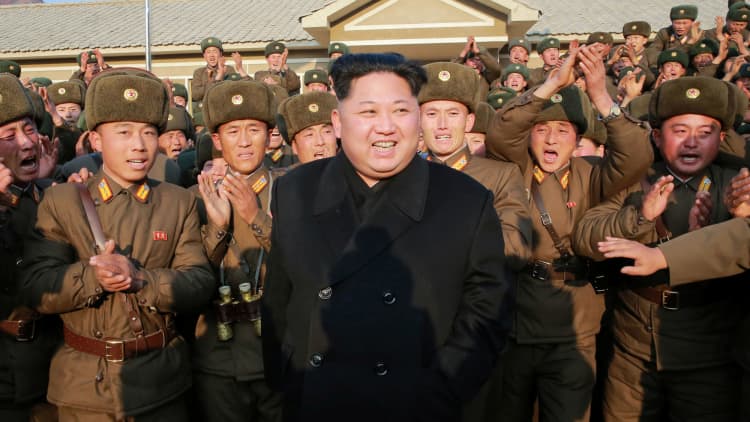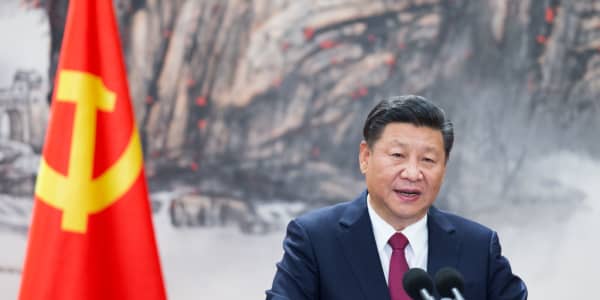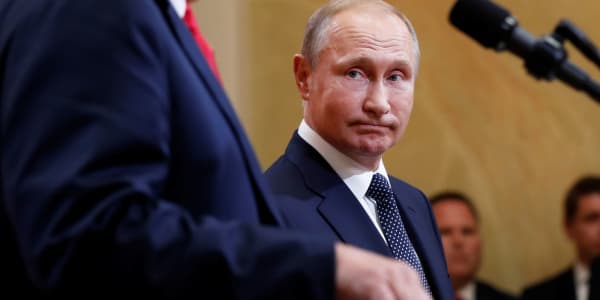Experts say a North Korean ballistic missile test conducted over the weekend was likely not the first test of an intercontinental ballistic missile, or ICBM, capable of threatening North America — a test North Korean media has said could come at any time. But Sunday morning's test launch, which came as U.S. President Donald J. Trump hosted Japanese Prime Minister Shinzo Abe in Palm Beach, Florida, marks a significant step forward for North Korea's ballistic missile program, including the reported use of more modern solid-fueled rocket engines that could make North Korean nuclear-capable rockets more difficult to track and target on the ground.
The test, as well as Trump's muted response to the provocation, are likely the first moves in a longer game of brinkmanship that will play out over the next several months between the new U.S. president and a North Korea reportedly very close to rounding out its missile arsenal with a long-range ICBM.
The missile launched Sunday morning — a so-called Pukguksong-2 — appears to have been an upgraded, extended-range version of a submarine-launched ballistic missile first tested successfully last year. Though the missile made a high arc before splashing down in international waters after traveling some 310 miles, some analysts place the likely maximum range of the missile at 1,870 miles (others estimate a shorter range of just 750 miles).
While such a missile falls far short of the range of the ICBM North Korean leader Kim Jong Un has pledged to develop, the new nuclear-capable missile could certainly threaten American regional allies like South Korea and Japan, as well as the roughly 80,000 U.S. troops stationed there. Moreover, the test demonstrated key technology pieces that place an ICBM within North Korea's reach, said Tom Karako, a senior fellow with the International Security Program and the director of the Missile Defense Project at the Center for Strategic and International Studies.

"I think that this particular test, while falling short of an ICBM demonstration, ought be seen as a technological advance," Karako said. Unlike a liquid-fueled rocket that must be fueled on the launch pad, solid fueled rockets can be moved with the fuel already loaded, reducing launch preparation times and allowing them to launch quickly from mobile launch units.
(Source: Kensho.com, returns for Japanese, Asian ex-Japan and US stocks one day after ballistic missile tests by North Korea dating back to 1998.)
"If North Korea is getting solid rocket motors right, then that really is a potential step function to making it harder for the United States to target these things on the ground, because they're more mobile," he said. "Moreover if they can get the motors right, and they stack them and configure them with other motors in a multi-stage configuration, you may already have the pieces of an ICBM laying on the ground, even if they've not been tested altogether yet."
Responding to the missile test, Trump and Prime Minister Abe issued a joint statement in which Abe called the launch "absolutely intolerable." Trump, not generally known for verbal restraint, made no direct reference to the launch at all but rather pledged "100 percent" support for Japan, calling it a "great ally."
More from Global Investing Hot Spots:
Money is pouring out of China, and the government can't stop it
No. 1 threat to the Trump presidency may be North Korea's nuclear plans
The dangerous tie between North Korea and Iran
The tenor of Trump's remarks varied somewhat from his response to a fiery New Year's Day address by North Korean leader Kim Jong Un in which he suggested the country was nearing a test of a very-long-range ICBM. Trump responded via Twitter the following day, declaring "It won't happen!"
Trump's more muted response may reflect an acknowledgment by U.S. officials that while North Korea likely has a long way to go in proving the viability of both its proposed ICBM and its nuclear warheads, the country has in recent years made significant strides in both nuclear and ballistic missile technology. North Korea has now conducted five nuclear tests (including two last year) and ramped up the tempo of its missile testing, launching several missiles — many thought to be intermediate-range Musudan missiles — in 2016.
It's a real threat, it's a growing threat, but it's one that we can and should continue to outpace.Tom Karakoa senior fellow with the International Security Program and the director of the Missile Defense Project at the Center for Strategic and International Studies
Sunday's test marked the first of Trump's presidency, marking a serious foreign policy challenge for the young presidency and one for which there are few good options for response, experts say. Direct military response to such provocations risks larger regional conflict. Several administrations have urged China to put pressure on North Korea to rein in its missile tests, to no avail (the U.S. president's repeated drumming on China over trade issues and conflicting interests in the South China Sea likely won't make Beijing more receptive to any overtures from Trump).
Direct negotiations between U.S. and Pyongyang are equally unlikely to bear fruit. Aside from the fact that deal-making might be seen as rewarding North Korea for violating U.N. resolutions pertaining to the missile launches, Kim is unlikely to walk back a program that is both central to his power at home and close to achieving its ultimate aim.
"The hardest thing to get the North Koreans to trade away were always the capabilities they already had," said Dr. Jeffrey Lewis, director of the East Asia Nonproliferation Program at the Middlebury Institute of International Studies at Monterrey in California. "They were often willing to not do things. But getting them to give something up that they've already done tends to be much harder. These things went from potential bargaining chips to real capabilities that they don't want to give up."
Regional game-changer
A North Korean ICBM launch sometime in the near future — a prospect heightened by Sunday's Pukguksong-2 launch — could force some changes in posture by the U.S. and its allies that would likely ripple across the region, in turn heightening tensions with China.
"There's no single consequence, it's a multitude of consequences," said Joe Bermudez, chief analytic officer of AllSource Analysis, and a contributor to 38 North, an online resource that tracks North Korean affairs. "It's unknown at this point in time how it will impact relations with the U.S. in the region."
A further uptick in North Korea's missile testing tempo, and especially of the test of an ICBM, would likely result in an accelerated deployment of the U.S. military's Terminal High Altitude Area Defense system, an anti-missile intercept system also known as THAAD. Though not designed to intercept ICBMs, the missile battery can intercept short, medium, and intermediate range missiles. Seoul and Washington have agreed to deploy the system in South Korea later this year much to the consternation of China, which worries THAAD's powerful radar could also be used to peer into Chinese territory. Any increased deployment of THAAD — to Japan, for instance — would further exacerbate the issue.
(Source: Kensho.com, returns for Japanese, Asia ex-Japan and U.S. stocks one day after mid- and intermediate-range North Korean missiles tests dating back to 1993.)
The North Korean missile threat is also driving security policy in the region in more traditional ways. Last week newly minted U.S. Secretary of Defense James Mattis' first international trip since taking office made stops in both Tokyo and Seoul to reassure the U.S. allies that Trump's administration and the U.S. military stand behind them, as well as to issue a warning to North Korea that any use of nuclear weapons would be met with an "overwhelming" response by the U.S. U.S. Rep. Mac Thornberry (R-Texas), chairman of the House Armed Services Committee, has also called for increased spending on missile defense in direct response to recent ballistic missile tests by North Korea and Iran.
For North Korea, capping off its ballistic missile arsenal with an ICBM isn't necessarily about launching strikes at faraway targets like the U.S. mainland, Lewis said. It's about showing its regional adversaries that it is both serious about its nuclear and missile programs, and that it has the technical proficiency to wage a very modern kind of warfare if threatened. In the event armed conflict broke out in the region, an ICBM also provides North Korea a means to push the U.S. in particular toward de-escalation rather than the kind of "overwhelming" response promised by Mattis.
"It's not a guarantee, but it's a really important step," Lewis said. "It's the straw that stirs the drink. If we get any bright ideas about rolling into Pyongyang, they have this retaliatory capability. And that really enables them to use their theater capabilities much more aggressively because we're not going to want to escalate. So if they have an ICBM capability that they can rely upon, it could be very destabilizing."
That said, a North Korean ICBM test is not something to panic over, but rather something to prepare for. "Folks have seen this threat coming for 20 years," Karako said. "That's why we have missile defenses in Alaska. It's a real threat, it's a growing threat, but it's one that we can and should continue to outpace."
— By Clay Dillow, special to CNBC.com




